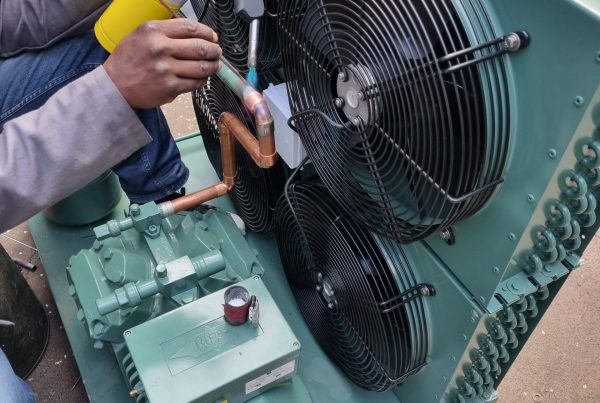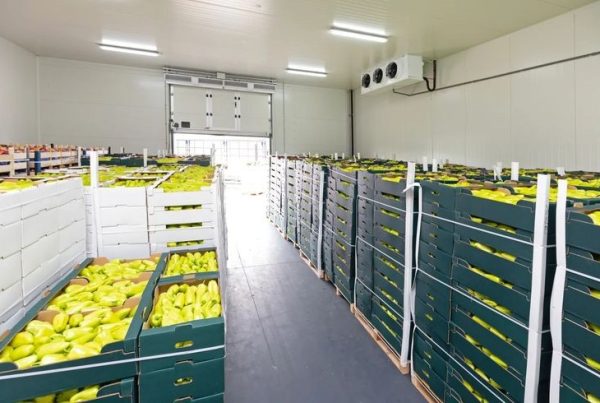FAQs on Cold Rooms by The Cold Room Kahuna.
1. Introduction to Cold Rooms
Cold rooms are essential facilities in various industries, providing a controlled environment for the storage and preservation of temperature-sensitive products. From food and beverages to pharmaceuticals, cold rooms play a crucial role in maintaining product quality and safety. This article explores the different aspects of cold rooms, providing comprehensive insights and answers to common questions.
2. Types of Cold Rooms
a) Walk-in Cold Rooms
Walk-in cold rooms are versatile storage units commonly used in restaurants, supermarkets, and hospitals. They allow easy access for personnel and are ideal for moderate storage needs.
b) Modular Cold Rooms
Modular cold rooms offer flexibility in design and size, making them suitable for a wide range of applications. They are constructed using prefabricated panels and can be expanded or modified as needed.
c) Industrial Cold Rooms
Industrial cold rooms are designed for large-scale operations, such as food processing plants and pharmaceutical storage facilities. These rooms are built to handle significant volumes and often incorporate advanced technology for precise temperature control.
d) Portable Cold Rooms
Portable cold rooms are mobile units that can be transported to different locations. They are often used in events, emergency situations, or remote locations where permanent cold storage is not available.
3. Key Components of a Cold Room
a) Insulation Materials
The effectiveness of a cold room largely depends on the quality of insulation. Common materials include polyurethane foam and polystyrene, which provide excellent thermal resistance.
b) Refrigeration Units
Refrigeration units are the heart of any cold room, responsible for maintaining the desired temperature. These units vary in capacity and efficiency, depending on the specific requirements of the cold room.
c) Control Systems
Modern cold rooms are equipped with sophisticated control systems that monitor and regulate temperature, humidity, and other environmental factors. These systems ensure consistent conditions and can alert operators to potential issues.
d) Shelving and Racking
Proper shelving and racking are essential for maximizing storage efficiency and maintaining organization within a cold room. Materials used must be resistant to cold temperatures and easy to clean.
e) Doors and Flooring
Cold room doors and flooring are designed to minimize heat ingress and withstand heavy usage. They often feature seals and thermal breaks to enhance energy efficiency.
4. Choosing the Right Cold Room
a) Factors to Consider
Selecting the right cold room involves considering various factors such as the type of products to be stored, the required temperature range, and the available space.
b) Size and Capacity
The size and capacity of a cold room should align with the storage needs of the business. It’s essential to consider both current and future requirements to avoid the need for costly expansions.
c) Temperature Range
Different products require different storage temperatures. For instance, fresh produce may need temperatures between 0°C to 4°C, while frozen goods require -18°C or lower.
d) Energy Efficiency
Energy efficiency is a critical consideration, as cold rooms can be energy-intensive. Investing in energy-efficient systems and insulation can lead to significant cost savings over time.
5. Installation Process
a) Site Selection and Preparation
Proper site selection and preparation are crucial for the successful installation of a cold room. Factors like accessibility, ventilation, and structural integrity must be considered.
b) Installation Timeline
The installation timeline can vary depending on the size and complexity of the cold room. On average, the process can take anywhere from a few days to several weeks.
c) Common Challenges and Solutions
Installation challenges such as space constraints, regulatory approvals, and technical issues are common but can be mitigated with proper planning and professional assistance.
6. Maintenance and Upkeep
a) Routine Maintenance Tasks
Routine maintenance is vital to ensure the optimal performance of a cold room. Tasks include checking insulation, cleaning evaporators, and inspecting door seals.
b) Troubleshooting Common Issues
Common issues like temperature fluctuations, refrigerant leaks, and ice buildup can impact the efficiency of a cold room. Early detection and prompt repairs are essential to prevent major failures.
c) Professional Maintenance Services
Engaging professional maintenance services can extend the lifespan of a cold room and reduce the risk of unexpected breakdowns. Regular inspections by qualified technicians are recommended.
7. Energy Efficiency and Cost Savings
a) Energy-Saving Technologies
Implementing energy-saving technologies such as variable speed drives, LED lighting, and advanced insulation can significantly reduce energy consumption in cold rooms.
b) Cost-Effective Operation Strategies
Optimizing the operation of a cold room by maintaining consistent temperatures, minimizing door openings, and using energy-efficient equipment can lead to substantial cost savings.
c) Case Study: Energy-Efficient Cold Room
A case study of a food distribution center that reduced its energy consumption by 30% through the implementation of energy-saving technologies and best practices.
8. Cold Room Safety Standards
a) Regulatory Requirements
Cold rooms must comply with various regulatory requirements, including food safety standards, occupational health and safety regulations, and environmental guidelines.
b) Safety Best Practices
Implementing safety best practices such as regular safety drills, proper signage, and emergency exits can prevent accidents and ensure the safety of personnel.
c) Emergency Procedures
Having clear emergency procedures in place for situations like power outages, equipment failure, or leaks is crucial for minimizing risks and protecting stored goods.
9. Frequently Asked Questions (FAQs)
a) What is the ideal temperature range for different products?
Different products have specific temperature requirements. For example, dairy products are typically stored at 1°C to 4°C, while frozen meats require -18°C or lower.
b) How often should cold rooms be serviced?
Cold rooms should be serviced at least twice a year to ensure optimal performance and prevent unexpected breakdowns.
c) What are the common causes of cold room failure?
Common causes include refrigerant leaks, compressor failures, and poor insulation. Regular maintenance can help identify and address these issues before they lead to failure.
d) How can I maximize the lifespan of my cold room?
Regular maintenance, proper usage, and investing in quality components can significantly extend the lifespan of a cold room.
e) Can cold rooms be customized to specific needs?
Yes, cold rooms can be customized in terms of size, temperature range, shelving, and other features to meet the specific needs of different industries.
10. Expert Insights: The Cold Room Kahuna’s Approach
a) Innovative Solutions by The Cold Room Kahuna
The Cold Room Kahuna specializes in providing innovative cold storage solutions tailored to the unique needs of its clients. Their approach includes custom designs, energy-efficient technologies, and robust after-sales support.
b) Customer Success Stories
Success stories from clients who have benefited from The Cold Room Kahuna’s expertise, highlighting how their cold rooms have improved efficiency, reduced costs, and ensured product quality.
11. Future Trends in Cold Room Technology
a) Smart Cold Rooms
The future of cold rooms lies in smart technology, with features like remote monitoring, automated controls, and predictive maintenance becoming increasingly common.
b) Advances in Refrigeration Technology
Ongoing advancements in refrigeration technology, such as the development of environmentally friendly refrigerants and more efficient compressors, are set to revolutionize the cold room industry.
c) Sustainability in Cold Room Design
Sustainability is becoming a key focus in cold room design, with an emphasis on reducing energy consumption, using eco-friendly materials, and minimizing environmental impact.
12. Cold Room Applications Across Industries
a) Food and Beverage Industry
Cold rooms are indispensable in the food and beverage industry for preserving the freshness and safety of perishable goods.
b) Pharmaceutical and Healthcare
In the pharmaceutical and healthcare industries, cold rooms are used to store vaccines, medications, and other temperature-sensitive products.
c) Floral and Horticultural Industry
Cold rooms help extend the shelf life of flowers and plants, ensuring they remain fresh during storage and transportation.
d) Industrial and Manufacturing Applications
Cold rooms are also used in various industrial and manufacturing processes where temperature control is critical, such as in chemical production and storage.
13. Common Misconceptions About Cold Rooms
a) Cold Rooms are Expensive to Operate
While cold rooms do require energy, advances in technology have made them more energy-efficient, reducing operational costs significantly.
b) All Cold Rooms are the Same
Cold rooms vary widely in design, capacity, and functionality. Customization allows businesses to choose cold rooms that meet their specific needs.
c) Maintenance is Only Necessary When Problems Arise
Proactive maintenance is essential to prevent problems and ensure the long-term efficiency and reliability of a cold room.
14. Practical Tips for Cold Room Owners
a) Maximizing Storage Efficiency
Organizing products efficiently, using the right shelving, and avoiding overloading can help maximize storage efficiency in a cold room.
b) Improving Cold Room Security
Implementing security measures such as access control, surveillance, and alarms can protect valuable products stored in cold rooms.
c) Tips for Expanding Cold Room Capacity
When expanding cold room capacity, consider modular options, upgrading insulation, and optimizing the use of existing space to accommodate growth.
15. Conclusion
a) Summary of Key Points
Cold rooms are critical assets in various industries, offering controlled environments for the storage of temperature-sensitive products. Choosing the right cold room, maintaining it properly, and staying informed about industry trends are key to maximizing its benefits.
b) Final Thoughts and Recommendations
Investing in a well-designed, energy-efficient cold room can lead to significant long-term savings and improved product quality. The Cold Room Kahuna’s expertise in providing tailored solutions makes them a trusted partner for businesses seeking reliable cold storage.





